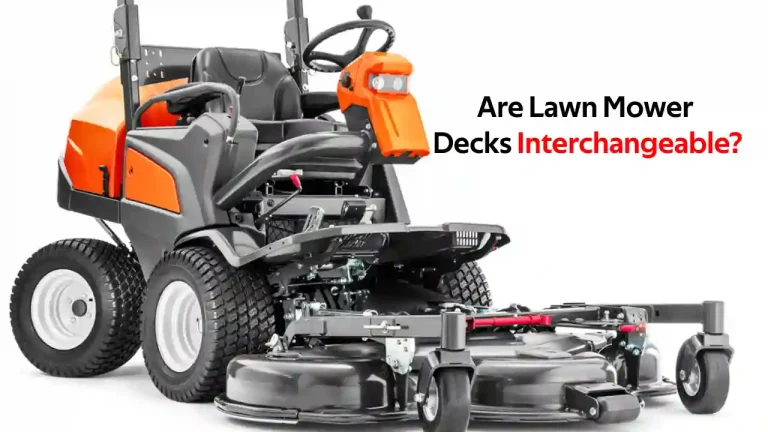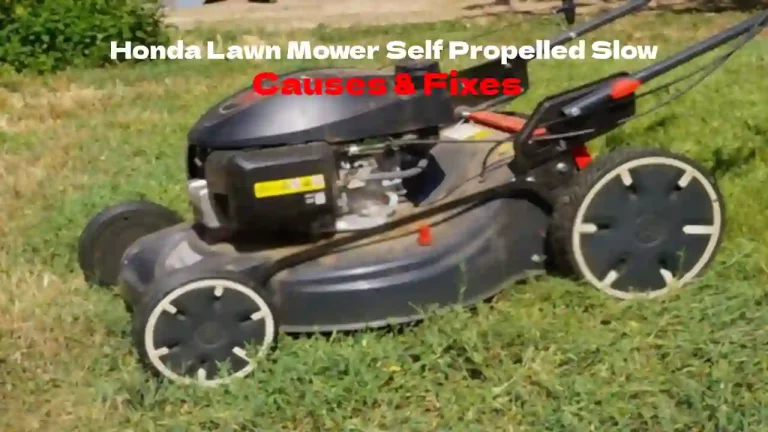“Spring is sprung, and the boidy’s on the wing, but that’s absoid, the wing is on the boid,” or so the lyric goes. There is always so much hope which Spring represents; swimming pools are opened, owners give their homes a good “spring clean,” and the grass starts growing. Time to bring out the trusty old lawnmower.
A lawnmower’s carburetor is typically positioned under the petrol tank; on the side or top of the engine, behind the air filter, on the opposite side to the muffler. The carburetor is sometimes hidden from view, and a non-mechanically minded person may find it challenging to locate.
Internal combustion engines need a spark, fuel, and air. The lawnmower carburetor plays a critical role in mixing the correct amount of gas and air required for the sparkplug to create combustion.
How To Find The Carburettor On Your Lawnmower?
If you are struggling the identify the carburetor on your lawnmower, here are a couple of Sherlock Holmes-type clues to help you on the road to finding it.
A carburetor is generally a shiny metal object with small metal components with several screws, levers, and springs; underneath the unit, there will be a bowl-shaped component.
There will be a gas line that enters the carburetor. The carburetor will have openings on the front and back where the air enters (from the air filter) and is forced into the piston chamber.
Carburetors used only to be made from metal; however, some newer model lawnmowers have introduced a plastic unit.
Every lawn mower has unique features, and the carburetor placement may vary slightly. You should quickly locate the carburetor on your lawn mower’s engine if you follow the steps below.
There will also be differences between the different types of lawnmowers.
Push Behind Gas Powered Lawnmowers
Push behind lawnmowers, which use a gas-powered engine, are the most common type of lawnmower sold.
They have many benefits over other lawnmowers, including mowing the lawn in restricted spaces, more reliability, better stability, lower cost, and a great form of exercise for the owner.
Each manufacturer’s engine layouts are similar, and finding the carburetor will not be difficult.
Under The Gas Tank
The first cryptic clue is that the carburetor will be installed lower than the gas tank.
In this way, the manufacturer can use gravity as the primary fuel feed from the gas tank. Below the gas tank, you will find a fuel pipe with a filter.
Follow the fuel line until you see where it enters the lawnmower innards.
Behind The Air Filter
It makes sense for the manufacturer to position the lawnmower carburetor directly behind the air filter.
The principal function of a lawnmower carburetor is to mix the fuel and air in the correct quantity. The optimal position to install the carburetor is directly behind the air filter; this ensures that no complex ducting is needed to get the air to where it is required.
Find the air filter, and you have solved the mystery. Air filters tend to be a black rectangular or round box with a black plastic air filter cover.
Most lawnmower manufacturers make the air filter housing easily accessible and easy to identify.
Once you find the air filter box, you can remove the air filter by simply unclipping the latches which hold the cover in place and pulling out the soft foam or paper air filter.
Once you have done this, a quick peek inside will reveal the carburetor.
Riding Lawn Mowers
On a riding mower, the carburetor is typically installed on the side of the Riding Lawn Mower’s engine.
The carburetor is located below or behind the air filter on the walk-behind Lawn Mower. Once again, the air filter and the air filter housing will need to be removed to access it. The steps to safely access the carburetor are as follows.
1. Turn off the ignition switch.
2. Raise the lawnmower’s seat to access the battery.
3. Remove the negative (black) cable from the battery
4. Pivot the engine hood up.
5. Pull off the air ducting after removing the mounting screws.
6. Remove the air filter cover.
7. Remove the air filter from its housing.
8. Unscrew the bolts holding the air filter housing and remove them, careful not to damage the gasket.
9. Depending on the make of riding lawnmower, you should now have access to the carburetor.
10. Some model lawnmowers may also require removing the front and rear blower housing mounting.
You can now access the lawnmower’s carburetor.
Why Do You Need To Know Where The Carburettor Is?
If your lawnmower’s carburetor is faulty, it will probably display the following symptoms.
Spoiler alert, although a faulty or dirty carburetor may cause the problems listed below, there may also be another cause of the fault.
The Lawnmower Engine Just Won’t Start.
If you pull the starter cord repeatedly, or with electric start lawnmowers, the lawnmower’s starter cranks over, and the engine won’t fire, then it could be due to a carburetor problem.
If the carburetor is dirty or the jets are blocked, the unit will not provide the correct amount of gas to the piston chamber. If this is the situation, the engine will typically not start at all.
The Lawnmower Engine Is Running Lean
If the lawnmower engine misfires or makes “popping” noises, the ratio of gas to air may be incorrectly set. Apart from misfiring, the lawnmower engine will also refuse to run at 100% power and will seem to be noticeably less powerful.
If too little gas reaches the piston chamber, the engine is running lean.
Remove the spark plug and match the color of the two electrodes. If they are a light grey or white color, the engine runs lean.
There are two leading causes of a lawnmower engine running lean which are.
- Not enough fuel is reaching the carburetor.
- The gas “jet” is not set correctly.
The Lawnmower Engine Is Running Too Rich
When a lawnmower engine runs rich, too much gas is being sent to the piston chamber. As there is no corresponding increase in air, the mixture ratio is wrong.
The symptoms of a lawnmower engine running rich may include
- The exhaust smokes more than usual and, generally, is black.
- You struggle to start the lawnmower because it always seems to be flooded.
- When the lawnmower engine does run, it uses more gas than usual.
The Lawnmower Engine Keeps Getting Flooded
If dirt gets into the fuel bowl, which is at the bottom of the carburetor, it is possible that the needle valve is blocked and is being prevented from closing. The fuel overflows from the bowl into the carburetor.
Gas will flow out of the bowl vents, which will cause the air-to-fuel ratio to become incorrect.
One way to check for this condition is to remove the spark plug once again. If the spark plug electrodes are wet, too much gas is being delivered, and unburnt gas is left in the cylinder.
The Lawnmower Starts But Quickly Dies Again
If the lawnmower briefly starts but dies again, not enough gas is getting through to the engine.
A dirty carburetor could cause the carburetor bowl to be clogged.
How Do You Fix The Problem?
If you experience any of these problems, the carburetor may need to be cleaned.
Carburetors are specialized, finely tuned devices, so experts should do most repairs.
There is one easy “fix” that you could try, which often has a good chance of success.
Purchase a good quality carburetor cleaner – Amazon – and follow the listed steps to clean out the lawnmower carburetor.
- Identify the carburetor bowl and unscrew it from the carburetor body.
- Spray the carburetor cleaner onto the inside surface of the bowl. Also, spray the cleaner onto the holding screw and hole to which the screw attaches.
- Give a light dusting spray to the hole through which the air enters.
- When you start the engine, it draws the carburetor cleaner into the device, and it will begin to clean any deposits which are blocking the fuel.
If this doesn’t help, it is recommended you consult a professional lawnmower technician.
Conclusion
A lawnmower’s carburetor will generally be mounted behind the air filter and in a position that is lower than the gas tank.
If you need to access it, the process is simple and can be achieved by a person with regular DIY ability.







